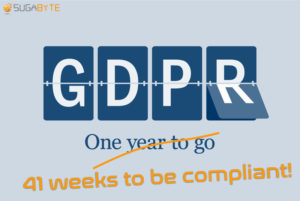For a lot of businesses, the outlay is often the focus of attention for decision makers when considering a CRM solution. Especially if its department leaders and employees themselves which are spearheading a CRM solution. We look at the ROI of deploying SugarCRM.
What is my return?
…Is a question that needs to be asked when businesses look to implement a CRM. The answer is not a simple as you think. But, in every situation I’ve been involved in where Sugar is being scoped for a CRM solution at an organisation – there has always been a clear positive ROI.
The answer is never a single financial figure.
“If the CRM costs X, the return in more business will be (X) x 1.5.”
This is impossible to calculate, so be weary of ROI calculators out there.
What is possible to calculate is efficiency savings.
I was recently involved in a project which would cut quoting time down by 50%. They had a crazy routine to reach a price they could offer their customers and various systems and spreadsheets to do so. Across the many employees that were performing this task, we calculated that £977,000 over 3 years of wages could be saved if the quoting work was completed in SugarCRM. This is a clear return.
What is the ROI of giving your customers a consistently good customer experience?
Well, probably, not going out of business. If you have competitors which make their customers feel like long-term, well known, valued customers (because they have a CRM) – and you don’t, because information/intelligence is not shared between employees, there is no standardisation of processes, and you have internal inefficiencies
(to name a few). It’s natural they will draw a bigger customer base and you will be left to catch up. In some cases, it can really hurt your business.

When the overbearing focus of a ’new CRM project’ is the cost, rarely is that path chosen. Or, a ‘free’ CRM solution is selected, (which isn’t fit for business) and you fail to achieve all the ‘ROI’s you keep hearing about.
If your business is not working with something like SugarCRM, or you have a legacy system (Like ACT, Goldmine, Excel) – you need to focus on more than black & white ROI numbers to reach your decision. Here are my top 5 non-calculable ROI’s of deploying SugarCRM:
Here are my top 5 non-calculable ROI’s of deploying SugarCRM:
- Consistent Customer Experience
- Eliminating undiscovered internal inefficiencies
- Compliance with laws such as the 2018 GDPR
- Stress
- Standardisation
Consistent Customer Experience
Ever dialled into a company you’ve done business with? Maybe a supplier, but could be any business really. Have you ever talked to more than one single employee, but feel like you have to completely explain who you are over and over again? It’s likely that this business doesn’t have a CRM, and is working with siloed data that doesn’t talk between departments. CRM changes that. No matter which customer-facing employee you speak to, they all have the same version of the truth.
Eliminating undiscovered internal inefficiencies
Sometimes you don’t know you can save a tonne of time doing a particular task, before you deploy SugarCRM and have a lot of internal processes, procedures and approvals all automated. Our customers often experience unexpected efficiencies with our solution.
Compliance with laws, such as the 2018 GDPR
The ROI of complying with one of the biggest changes to data protection and privacy in history is not landing you with a fine up to €20 million or 4% or annual global turnover – whichever is higher.
Stress
On average, each week we meet with at least 1 new prospect looking to deploy SugarCRM at their business. During the meeting, we often discuss your current business pain points. A topic that always comes up, is how the current inefficiencies and issues a CRM would clearly solve is resulting in stress with employees today.
Standardisation
Have you ever worked somewhere where one person does a pretty important business task one way, and another does it completely differently? Some argue that there is more that one way to crack a nut. Others and I included would say that if the business is looking to scale, simplify the training and onboarding process or provide consistency with your work – the last thing you want is a free-for-all with systems, processes, data, communications and security.






